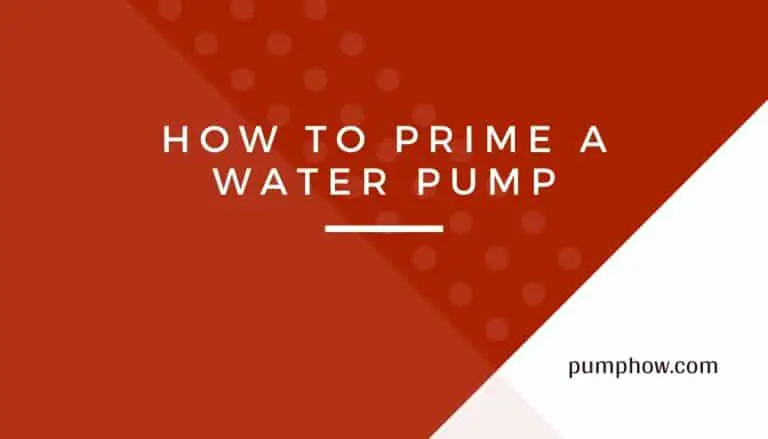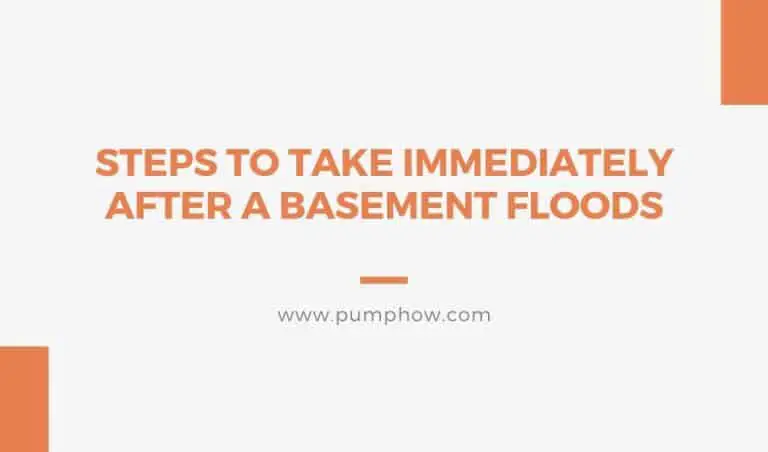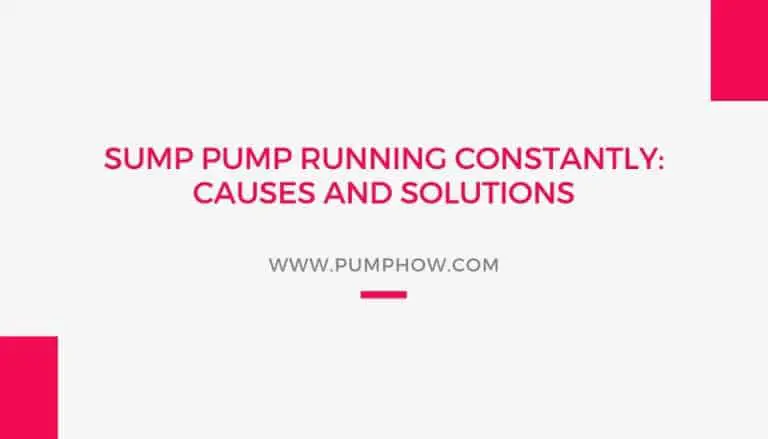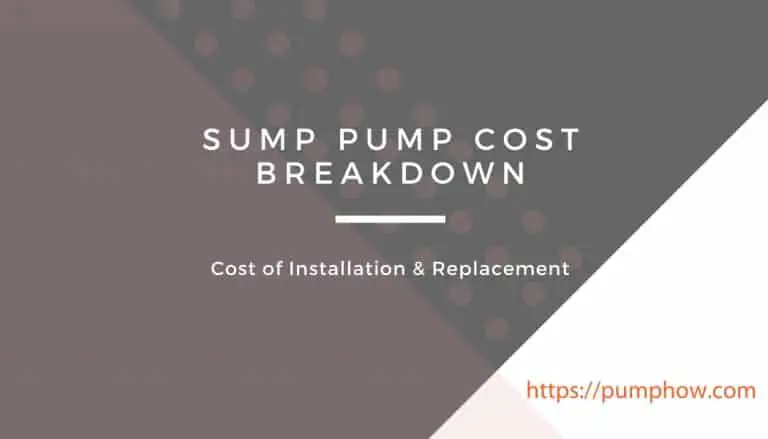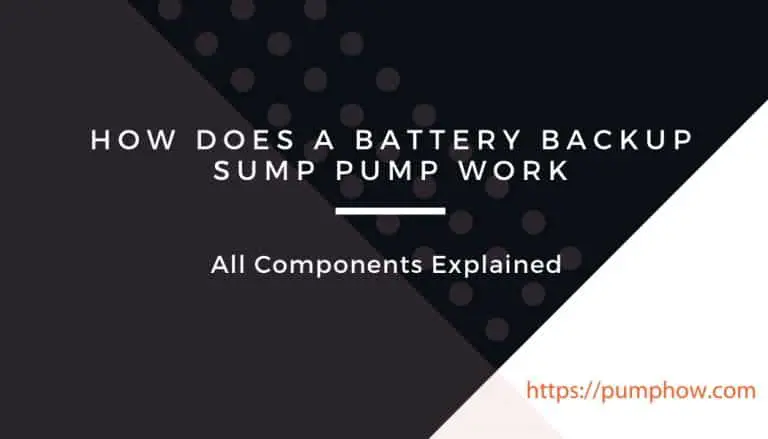Finding the clear winner between a pedestal and a submersible sump pump is not easy as pie without explanations and practical insights into their usability, performance, cost, and maintenance requirements.
Both pumps offer distinguished advantages and considerable disadvantages or limitations which confuse users as they try to make a solid purchase. In practice, they’re neither good nor bad. It comes down to the demands of your basement, your budget, and the ways either of these sumps meets your expectations.
Here, we’re going to analyze the overall construction, serviceability, durability, and cost of pedestal vs. submersible sump pump so that you can make better decisions.
Pedestal vs. Submersible Sump Pump: Most Obvious Differences
First, we’re giving you a brief on the most notable points that differentiate one sump system from another.
- Design and Installation: The motor of a pedestal sump pump rests above the sump pit, but a submersible system has it inside the pit.
- Pumping Capacity: Considering the volume of water that can be pumped per hour, submersible pumps are more capable than pedestals.
- Noise: Being submerged all the time, a submersible sump pump operates with little noise, but a pedestal pump makes audible noises.
- Maintenance: Having the motor and moving parts above the pit, pedestal pumps don’t require rigorous efforts like the way submersibles do.
- Cost: Greater performance comes at a cost. So, you know which one goes on top of another.
When you want to consider factors like durability and frequency of maintenance, it’s hard to reach an indisputable conclusion. While some may give credit to submersible pumps for its lifespan, experiences of many homeowners demonstrate otherwise. Again, how often a pump needs to be maintained actually depends on how much it runs and its build quality.
Now, we’ll be going deep into the mechanical and technical aspects so that you can gain an in-depth understanding of both systems.
Pedestal Sump Pump Explained
The design of this type is planned in a way that the base, the impeller, the float switch, and the discharge system are placed inside the pit with the pump motor resting outside the pit, often above the liner. The goal is to keep the motor away from the water.
Due to this design, a supportive brace is often attached to the pump’s motor; so it can be kept stationery both during and after the operation.
A motor above the pit and without any special insulation cover results in some level of noise which may cause disturbance to your regular life if the part of the basement where the pump sits is much close to your living space.
In addition, being outside the covered basin, the motor remains reachable, and an unsuspecting child can get near it just out of curiosity and end up getting injured. Keeping the pump in an enclosed environment can be the remedy.
A brighter side to the motor is that it takes less amperage to operate than what the motor of a submersible pump does. It results in energy efficiency, which can be a point of interest to many buyers.
A 0.5-HP pump may use up to $30 per month in energy (electricity) during wet months. This cost is higher than the combined energy cost of a few home appliances like a dryer, a refrigerator, and a washing machine.
Though there’re several types of float switches for residential sump pumps, this type mostly uses vertical float switches that are attached with vertical float rods and rod stabilizers. Due to this very placement, the switch doesn’t take you much labor as you need to replace it.
The float moves with the level of water. When the water causes the vertical float to reach a preset height, the motor gets activated by the switch. Similarly, as the water causes the vertical float to go below the preset height, the switch turns the motor off. This is precisely how a pedestal sump system works.
Most pedestal pumps feature a sentry light to display its operational status, a smart feature that is absent in most submersible pumps. Like any motor, the one in your pedestal system needs to be cooled off. Since a typical pump comes with no built-in cooling system, you should keep the pump in an area that boasts good air circulation.
Pedestal pumps produce arguably a longer service life than their submersible alternatives, a debatable statement that homeowners can’t settle on easily. Part of this debate is relevant because the housing of most pedestal pumps uses thermoplastics which can’t be as solid and durable as cast iron, a material of choice for only a few models.
Another serious downside to a pedestal pump is that it’s not built to handle virtually any kind of solid, let alone the spherical ones. It also struggles with loose dirt/debris. So, a clean and well-maintained pit is the prerequisite to getting a smoothly operational pedestal sump system.
As far as you want to put versatility into perspective, submersible sumps come out with a bigger number of nods than the type we’ve discussed so far.
Submersible Sump Pump Explained
As the pit’s water reaches exactly the same height as that of the float, its switch activates the motor, and thus begins the “pumping” action.
These pumps may use any of these switches, such as electronic and mechanical. The switch can be attached inside the sump pump and/or to an external part of the pump. The external switches are often called piggy-back switches that allow the user to plug the motor cord into the Alternating Current outlet directly in the event of a failure of the internal one.
Speaking of float switches, users of submersibles can choose from four different styles, such as diaphragm, electronic, tether, and vertical. Despite this flexibility, you won’t appreciate that the float can’t be adjusted as required, just like you could with the vertical float of a pedestal pump. The only way to adjust the position of the float is to install it in a way that it stays independent of the pump.
These pumps don’t work very well with an extension power cord. So, it requires a dedicated electrical outlet along with a circuit breaker. The length of a power cord varies with the shortest being 5 feet and the longest being 25 feet. It’s recommended that the cord be plugged into the GFCI outlet directly, not essentially into any extension cord. So, the longer the cord is, the better it turns out to be.
The diameter of a sump pit is critical, especially when you’re looking at a submersible style. The shape needs to be same at the bottom and at the top. The pit can be at least 11 inches and up to 24 inches in diameter.
Common housing and construction materials for this type include thermoplastic, stainless steel, and cast iron with the latter two being the most reliable and popular for their weight, durability, and stability.
The motors used on submersible sump systems offer more horsepower than that of pedestal systems. Besides, these motors are often rated for continuous duty. Both factors add to its higher efficiency in pumping out the water in larger volumes and faster than any pedestal pump.
Comes with this extended duty cycle is another concern – the way the pump gets cooled off. We think this type gets an upper hand in this area too. It requires no special settings or placement because of being under the water that keeps it cool during its busier periods of operation. Moreover, a cast iron/bronze housing handles heat dissipation better than materials like plastics or aluminum.
After learning all these about the power of a submersible pump’s motor, you won’t find it surprising that it draws more electrical power, which results in higher energy bills than those required by a pedestal pump’s motor.
Where a pedestal pump isn’t much of a choice for handling solid-laden water, submersibles that use a vortex or channel impeller can take care of the problem. The former creates a whirlpool of water while the latter has fewer vanes and can handle sludge or solids more efficiently.
You may, like some homeowners wonder how much space your sump pump is taking up. Well, there’s a difference in this matter too. When there’s an emphasis on saving as much of the basement space as possible, a pedestal sump system can’t be as suitable as a submersible type.
Pedestal vs. Submersible Sump Pump: Which One is Better
In Layman’s terms, submersible pumps serve more reliable than pedestal sumps. From the view of cost-effectiveness, pedestal systems are better. So, homeowners who don’t have to deal with serious wet basement issues enjoy miles of leeway while choosing between them.
Those who can’t shake off their fears of flooding are left with only one choice, submersible pumps. However, adding a backup system may give you better readiness, no matter which particular style of primary sump systems you choose.
There are dozens of high-quality combo units that may save you the hassles of decision-making, and more importantly help you stay on budget.
Need more suggestions regarding these two types of sump systems? Feel free to shoot a message and relevant details to let us help you!

